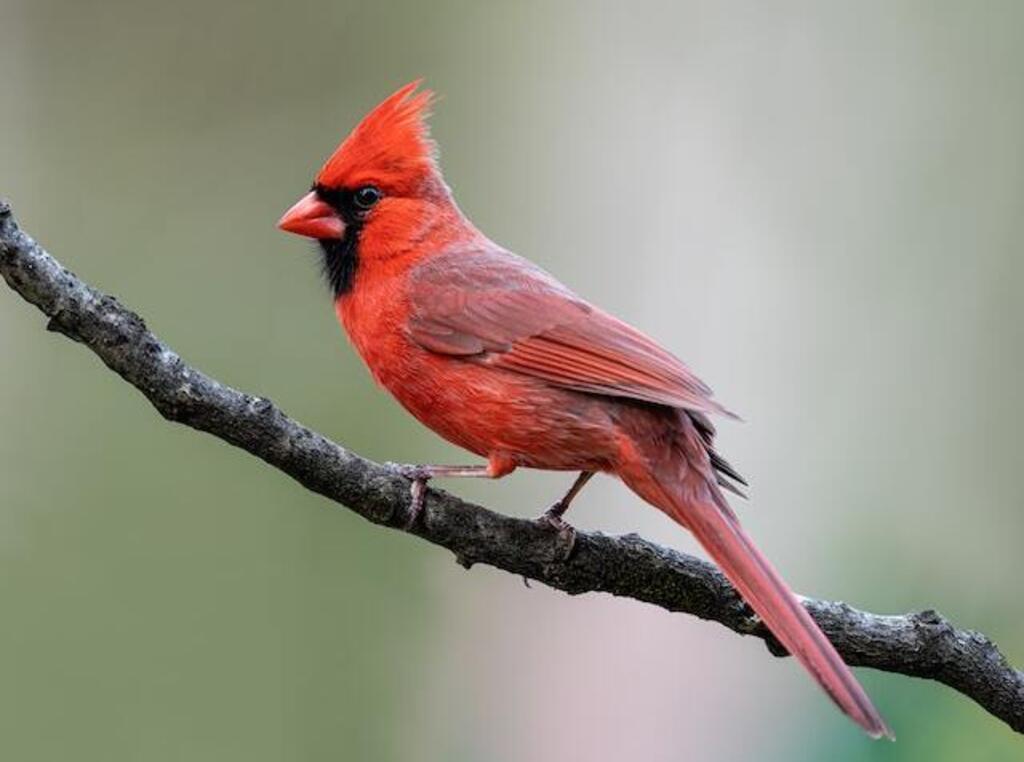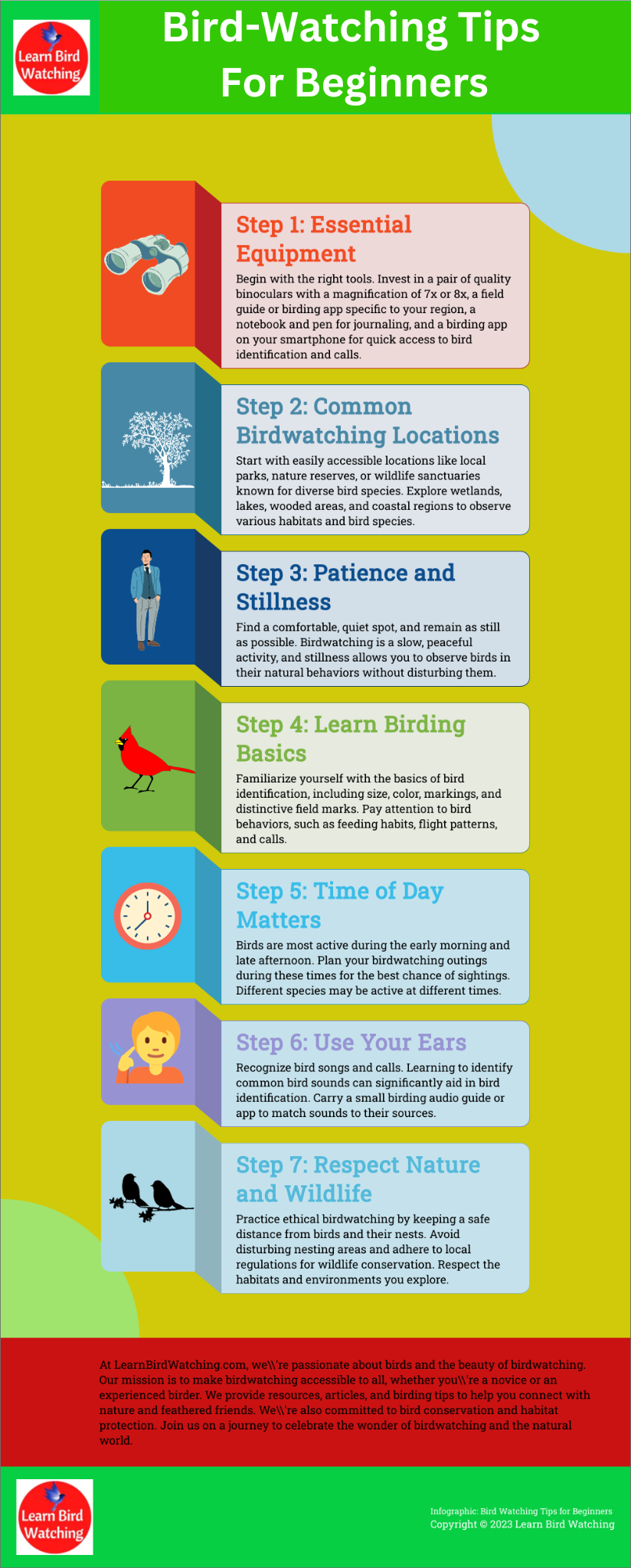Attention all budding birdwatchers! Brace yourselves for an exhilarating adventure into the captivating world of birdwatching. With millions of enthusiasts worldwide, this popular recreational activity is both exciting and overwhelming for beginners.
But fear not! Our comprehensive guide to birdwatching is here to equip you with the “Best Birdwatching Tips For Beginners.” From essential gear to local hotspots, species identification to ethical photography, we’ve got you covered.
So, grab your binoculars and get ready to embark on a journey of discovery, wonder, and endless fascination with our feathered friends.
Table of Contents
- 1 Key Takeaways
- 2 Essential Birdwatching Equipment
- 3 Research Local Birding Hotspots
- 4 Best Time of The Day To Go Birdwatching
- 5 Learn to Identify Common Bird Species
- 6 Practice Patience and Observation Skills
- 7 Record Your Sightings
- 8 Be Respectful of Birds and their Habitat
- 9 Dress Appropriately for Birdwatching
- 10 Learn Birdwatching Techniques
- 11 Join Birding Communities and Events
- 12 Practice Ethical Bird Photography
- 13 Be Open to Learning and Discovery
- 14 Enjoy the Beauty of Nature
- 15 Conclusion
- 16 Frequently Asked Questions
- 16.1 How do I attract birds to my backyard for birdwatching?
- 16.2 What are some common mistakes beginners make while birdwatching?
- 16.3 Can I use binoculars for birdwatching or are there other specialized equipment I need?
- 16.4 Are there any apps or websites that can help me identify bird species?
- 16.5 How long does it typically take to become proficient in bird identification?
- 16.6 What equipment do I need for birdwatching as a beginner?
- 16.7 Where is the best place to go birdwatching as a beginner?
- 16.8 How can I identify birds while birdwatching?
- 16.9 What time of day is best for birdwatching?
- 16.10 How should I approach birds while birdwatching?
- 16.11 What should I do if I can’t identify a bird I’ve seen?
- 16.12 Are there any safety considerations while birdwatching?
- 16.13 How can I enhance my birdwatching experience?
- 16.14 How can I contribute to bird conservation efforts as a beginner birdwatcher?
- 17 Author
Key Takeaways
- Essential birdwatching equipment includes binoculars, a field guide, a camera, and a notebook.
- Researching local birding hotspots helps identify areas with diverse bird populations.
- Learning to identify common bird species requires patience and observation.
- Engaging with birding communities and events expands knowledge and provides shared experiences.
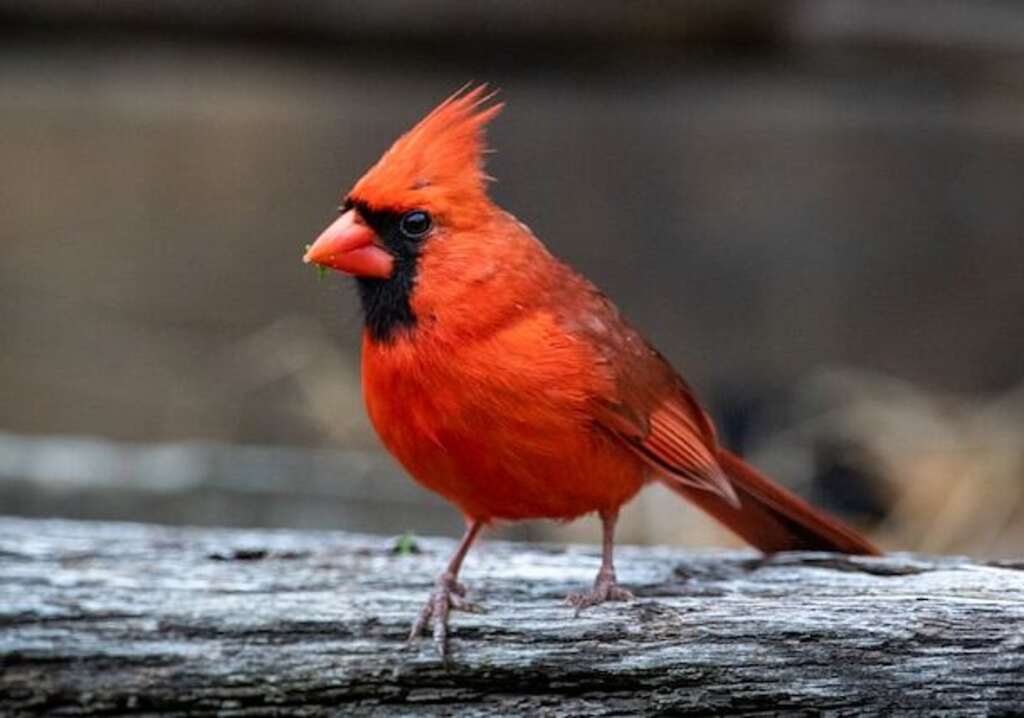
Essential Birdwatching Equipment
The use of essential birdwatching equipment enhances the observer’s ability to accurately identify and document avian species in their natural habitats.
To fully engage in this hobby, birding enthusiasts must have gear that enables them to effectively observe and study birds.
One of the birding essentials is a pair of binoculars, which allows for a closer view of birds in their natural surroundings.
Opting for binoculars with high magnification and field of view is crucial for detailed observations.
Additionally, a field guide is indispensable as it provides comprehensive information on various bird species and their characteristics.
A reliable camera with a telephoto lens is also necessary to capture images of birds, especially for documentation purposes.
Lastly, a notebook and pen are essential for recording important observations such as bird behavior, habitat, and any unique markings.
By possessing these must-have gear, birdwatchers can enhance their birding experience and contribute valuable data to the study of avian life.
Research Local Birding Hotspots
Researching local birding hotspots is essential for birdwatchers seeking to maximize their potential sightings and enhance their overall birding experience.
By identifying the best locations in their area, birdwatchers can increase their chances of spotting a wider variety of species.
Local birding organizations are a valuable resource for finding information about popular birding spots, as they often organize birding events and maintain up-to-date lists of local hotspots.
Additionally, birdwatching apps have become increasingly popular, providing birders with real-time information about bird sightings, bird calls, and even offering interactive maps of local birding areas.
These apps can be a convenient and efficient way for beginners to quickly learn about the best places to go birdwatching in their vicinity.
By utilizing these resources, birdwatchers can make the most of their time in the field and enjoy a rewarding birding experience.
Best Time of The Day To Go Birdwatching
Birdwatching can be an exciting and rewarding activity, and the time of day you choose to go can greatly influence your birdwatching experience.
While birds can be observed throughout the day, certain times offer better opportunities for sightings and unique behaviors. Here are some considerations for the best time of the day to go birdwatching:
- Early Morning: Many birdwatchers consider early morning, specifically around sunrise, as one of the best times for birdwatching. During this time, birds are often more active, singing, and foraging. They tend to be easier to spot and identify as they are more visible in well-lit environments. Morning hours are also known for having less human activity and noise, providing a tranquil setting for birdwatching.
- Late Afternoon: Another favorable time for birdwatching is late afternoon, typically a couple of hours before sunset. During this time, birds become more active again after the midday lull. They may engage in behaviors such as feeding, bathing, or flocking together in preparation for the night. The low angle of the sun’s rays can also enhance the visibility of birds and highlight their features.
- Seasonal Considerations: The time of day that is best for birdwatching can vary depending on the season. For example, during migration periods, such as spring and fall, birds tend to be more active during the early morning as they embark on their long journeys. Breeding seasons may see increased bird activity throughout the day as they engage in courtship displays and nest-building.
- Nocturnal Species: If you are interested in observing nocturnal species, such as owls or nightjars, the best time for birdwatching would be during dusk or dawn. These birds are more active during these low-light periods, and they may vocalize or engage in hunting behaviors that are unique to their nocturnal lifestyle.
- Local Knowledge: It’s essential to consider the specific habits and patterns of birds in your local area. Some species may have preferred feeding or roosting times, which can vary depending on factors like habitat, climate, and food availability. Consulting local birding resources, joining birdwatching groups, or talking to experienced birdwatchers in your area can provide valuable insights into the best times to observe specific bird species.
Remember, birdwatching can be enjoyable at any time of the day, and each time period offers unique opportunities.
It’s also important to be respectful of birds and their habitats, following ethical guidelines and avoiding any disturbance that could harm or disrupt their natural behaviors.
By selecting the best time for birdwatching and being patient and observant, you can maximize your chances of encountering a wide variety of bird species and enjoying the wonders of the avian world.
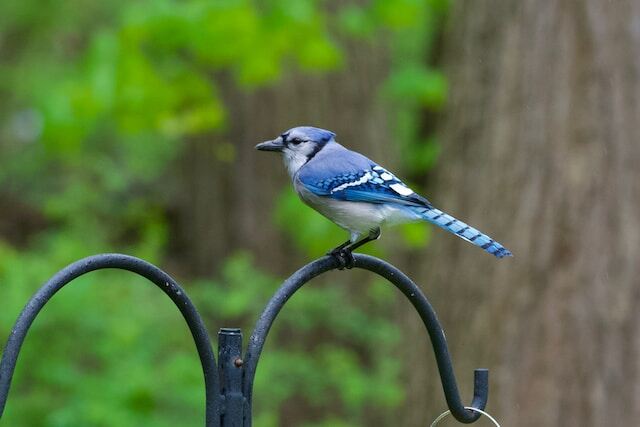
Learn to Identify Common Bird Species
One important skill for birdwatchers is to learn the identification of common bird species. This skill is essential for enhancing the birdwatching experience and contributing to the overall understanding of avian diversity.
To effectively identify birds, it is crucial to familiarize oneself with birdwatching techniques and bird identification tips.
Observation of physical attributes such as size, plumage coloration, beak shape, and behavioral patterns can provide valuable clues for species identification.
Additionally, paying attention to habitat preferences and geographical distribution can further aid in narrowing down potential species.
Utilizing field guides, online resources, and mobile applications can be immensely helpful in confirming bird identifications.
Developing a systematic approach to bird identification, by noting key characteristics and comparing them to known species, can enhance accuracy and confidence in identification skills.
By constantly practicing and expanding one’s knowledge base, birdwatchers can become proficient in identifying common bird species.
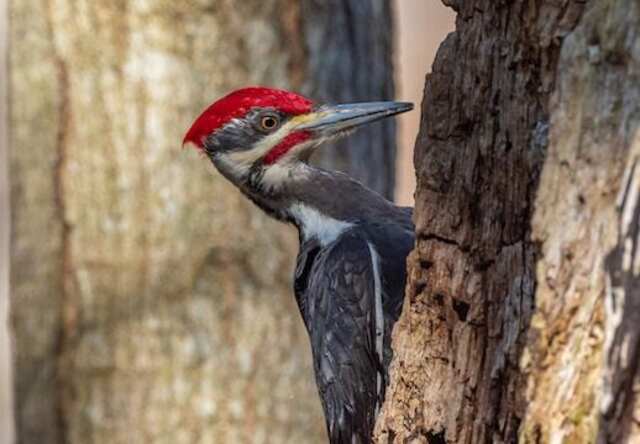
Practice Patience and Observation Skills
Practicing patience and honing observation skills are essential for birdwatchers to effectively identify and appreciate the diverse avian species in their natural habitats.
By practicing mindfulness and developing bird identification skills, birdwatchers can enhance their birdwatching experience.
Here are four tips to help beginners improve their observation skills:
- Be attentive: Pay close attention to the details of the bird’s appearance, such as its size, shape, color patterns, and distinctive features like beak shape or wing markings.
- Observe behavior: Take note of the bird’s actions, such as its flight pattern, feeding habits, and vocalizations. These behaviors can provide valuable clues for identification.
- Use field guides: Carry a reliable field guide to help you identify birds. Familiarize yourself with the guide’s layout and learn to navigate it efficiently.
- Practice in different habitats: Explore a variety of habitats, such as forests, wetlands, or coastal areas, to encounter different bird species. Each habitat has its own unique bird community.
By following these tips and continuously practicing patience and observation, birdwatchers can develop their skills and enjoy the wonders of birdwatching to the fullest.
Record Your Sightings
Recording your sightings is a crucial step towards contributing to scientific knowledge and understanding of bird populations and migration patterns.
Birdwatching apps and keeping a bird journal are effective tools for recording and documenting your observations.
Birdwatching apps provide a convenient way to record your sightings and access information about different bird species.
These apps often include features like bird identification, bird calls, and distribution maps.
Keeping a bird journal allows you to document your observations in detail, including the date, time, location, weather conditions, and any notable behaviors or characteristics of the birds you encounter.
This information can be valuable for researchers studying bird behavior, migration patterns, and the impact of environmental changes on bird populations.
By recording your sightings, you can contribute to citizen science initiatives and help scientists gain a deeper understanding of avian ecology.
Be Respectful of Birds and their Habitat
Birdwatching ethics play a crucial role in bird conservation, ensuring that our interactions with birds do not harm them or their habitats.
To be respectful of birds and their habitat, birdwatchers should adhere to the following guidelines:
- Keep a safe distance: Maintain a safe distance from birds to avoid causing stress or disrupting their natural behaviors.
- Stay on designated paths: Stick to designated paths and trails to minimize disturbance to nesting sites and fragile habitats.
- Leave no trace: Carry out all trash and dispose of it properly, leaving no litter behind that could harm birds or their habitats.
By following these guidelines, birdwatchers can enjoy their hobby while also contributing to the conservation of birds and their habitats.
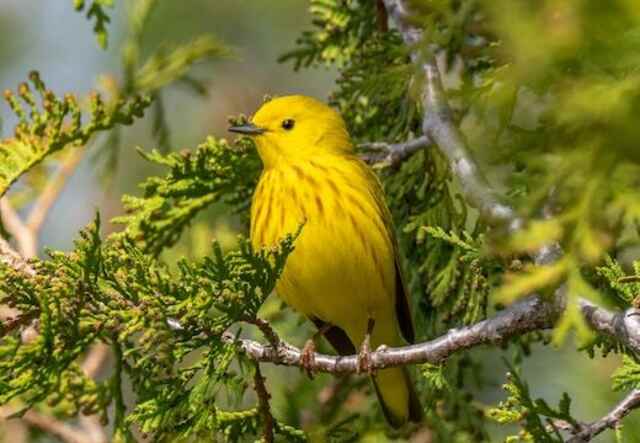
Dress Appropriately for Birdwatching
Appropriate attire is crucial for birdwatching, ensuring minimal disturbance to birds and their natural environment.
Birdwatching fashion involves choosing clothing that is comfortable, functional, and blends in with the surroundings.
Dressing for birding weather is also important, as it can vary greatly depending on the location and time of year.
To help you dress appropriately for birdwatching, here is a table outlining essential clothing items and accessories:
| Clothing | Accessories | Footwear |
|---|---|---|
| Neutral-colored | Binoculars | Sturdy and |
| clothing | comfortable | |
| with minimal | Field guide | hiking boots |
| patterns or | or waterproof | |
| bright colors | shoes | |
Neutral-colored clothing with minimal patterns or bright colors helps you blend into the environment and reduces the chance of startling birds.
Binoculars and a field guide are essential accessories for bird identification.
Sturdy and comfortable footwear, such as hiking boots or waterproof shoes, provide support and protection during outdoor exploration.
By dressing appropriately, you can enjoy birdwatching while respecting the birds and their habitat.

Learn Birdwatching Techniques
When it comes to birdwatching techniques, one important skill to learn is scanning the skies and treetops.
This involves systematically searching for birds in the sky and high branches, using a methodical approach to cover all areas of observation.
Another essential technique is using binoculars properly, which requires knowing how to adjust the focus, hold them steady, and use them to zoom in on birds for a closer look.
Additionally, focusing on field marks and behavior is crucial for identifying birds accurately.
This includes paying attention to physical characteristics such as color patterns and shapes, as well as observing their movements and habits in order to distinguish between different species.
Scan the Skies and Treetops
Observing the vast expanse of the sky and the intertwining branches of the treetops allows birdwatchers to spot elusive avian species.
By employing various scan techniques, birdwatchers can effectively identify different birds as they navigate the skies and seek shelter in the treetops.
When scanning the skies, it is important to maintain a wide field of view to capture any movement or patterns. This can be achieved by slowly panning across the sky using binoculars or a spotting scope.
Additionally, focusing on specific areas such as flight paths or open spaces can increase the chances of spotting birds in flight.
When scanning the treetops, it is crucial to pay attention to any movement or distinctive features, such as silhouettes or color patterns.
By utilizing these scan techniques and observing the skies and treetops, birdwatchers can enhance their bird identification skills and discover a world of avian wonders.
Use Binoculars Properly
To effectively utilize binoculars, birdwatchers must familiarize themselves with the proper technique.
Proper binocular use is essential for birdwatching enthusiasts to enhance their overall experience and improve their ability to spot and identify birds in the field.
Firstly, it is crucial to adjust the binoculars to fit the individual’s eyesight by adjusting the interpupillary distance and focusing the lenses.
Additionally, birdwatchers should hold the binoculars steadily against their face and use the correct eye for sighting.
By keeping both eyes open, birdwatchers can maintain a wider field of view and better track the movement of birds.
It is also helpful to practice scanning the area systematically, from left to right or vice versa, using the binoculars to focus on specific objects of interest.
These birdwatching techniques, when combined with patience and perseverance, can greatly enhance the birdwatching experience.
Focus on Field Marks and Behavior
Field marks and behavior are important factors to consider when identifying and studying birds in their natural habitats.
Field markings, such as color patterns, shape of the bill, and distinctive plumage, provide valuable clues for species identification.
By carefully observing these features, birdwatchers can differentiate between similar-looking species.
Additionally, studying bird behavior can also aid in identification. Each bird species has unique behaviors, such as foraging techniques, flight patterns, and vocalizations.
These behaviors can help birdwatchers narrow down their options and confidently identify a particular species.
For example, certain birds may exhibit specific courtship displays or territorial behaviors during breeding season.
By understanding and recognizing these behaviors, birdwatchers can enhance their birding experience and gain a deeper appreciation for the diversity and complexity of avian life.
Here’s a table outlining common birdwatching techniques, why birdwatchers use them, and when they are typically employed:
| Birdwatching Technique | Purpose | When to Use |
|---|---|---|
| Scanning | Spotting birds in a wide area | When searching for birds in open landscapes |
| Pishing | Attracting birds through mimicked sounds | When trying to lure out hidden or elusive birds |
| Bird Calls | Identifying and locating specific species | When trying to confirm the presence of a particular bird species |
| Bird Song Imitation | Attracting or communicating with birds | During breeding season or to observe bird behavior and interactions |
| Raptor Distraction | Drawing birds’ attention away from nests | When observing birds of prey without disturbing their nests |
| Camouflage | Blending into the environment | When observing birds in close proximity without causing disturbance |
| Feeder Placement | Attracting birds to a specific location | All year round, but especially during winter when food sources are scarce |
| Stillness and Patience | Observing bird behavior and interactions | When studying intricate details and behaviors of birds |
| Perseverance | Maximizing chances of rare bird sightings | During long hours of observation and repeated visits to specific locations |
| Night Observation | Observing nocturnal bird species | When targeting owls, nightjars, and other birds active at night |
These techniques are utilized by birdwatchers to enhance their observations, identify specific bird species, and improve their overall birdwatching experience.
The choice of technique depends on the birdwatcher’s objectives, the specific habitat or bird species being targeted, and the time of day or year

Join Birding Communities and Events
By immersing oneself in birding communities and participating in events, individuals can tap into a vibrant network of fellow enthusiasts, fostering a sense of camaraderie akin to a flock of birds soaring through the sky.
These communities and events provide an invaluable opportunity for beginners to learn from experienced birders and expand their knowledge of avian species.
Here are some reasons why joining birding communities and events is beneficial:
- Networking: Birding communities offer a platform to connect with like-minded individuals who share a passion for birds. This allows beginners to exchange information, seek advice, and learn from experienced birders.
- Learning opportunities: Birding events often feature expert-led workshops, lectures, and field trips, providing beginners with a chance to enhance their identification skills, bird behavior knowledge, and understanding of habitat conservation.
- Access to resources: By joining birding communities, beginners gain access to valuable resources such as field guides, birding hotspots, and online forums, which can aid in their birdwatching endeavors.
- Support and encouragement: Being part of a birding community offers a supportive environment where beginners can seek encouragement, share their sightings, and celebrate their successes, fostering a sense of belonging and motivation.
Participating in birding communities and events not only deepens one’s understanding of birds but also allows for the formation of lasting friendships and a sense of belonging within the birdwatching community.
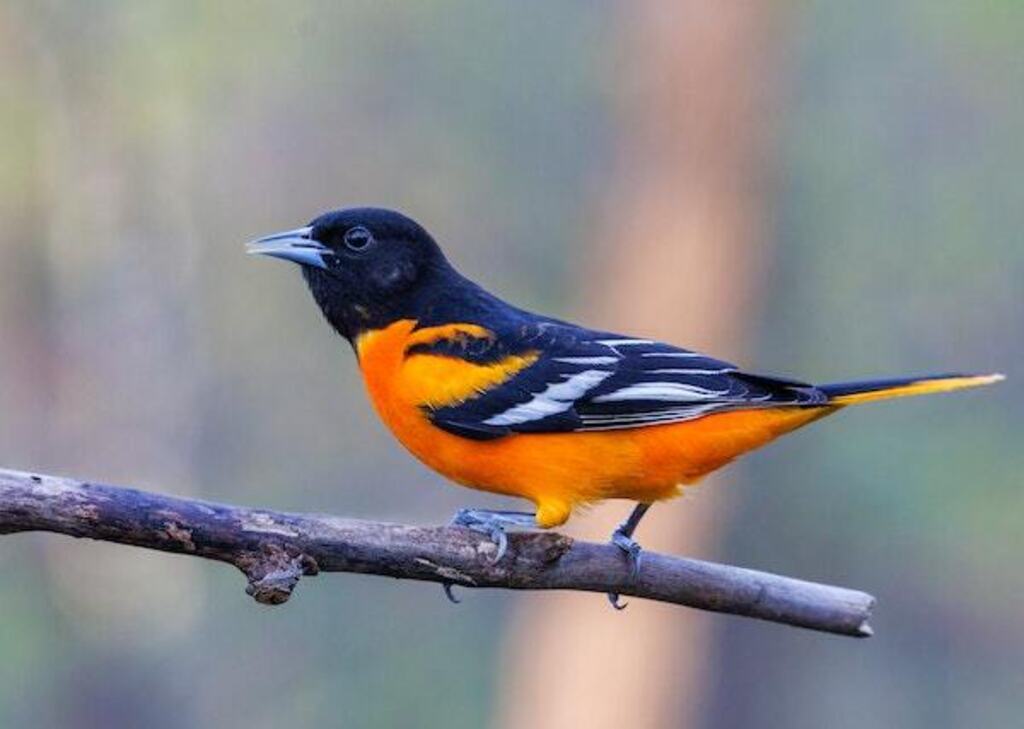
Practice Ethical Bird Photography
Engaging in ethical bird photography ensures the well-being and preservation of avian species, capturing their beauty in a way that respects their natural behaviors and habitats.
It involves using responsible birdwatching techniques to minimize disturbance to the birds and their environment.
Ethical bird photographers prioritize the welfare of the birds over getting the perfect shot. They maintain a safe distance, use telephoto lenses, and avoid disturbing nesting sites or breeding areas.
Additionally, they never use bait or playback recordings to attract or manipulate the birds.
By adhering to these practices, ethical bird photographers contribute to the conservation of avian species and their habitats.
They raise awareness about the importance of protecting birds and their ecosystems, inspiring others to appreciate and conserve these magnificent creatures.
| Ethical Bird Photography | Emotional Response |
|---|---|
| Respects natural behaviors | Awe and appreciation for bird behavior |
| Minimizes disturbance to birds | Respect for bird welfare |
| Avoids bait and playback recordings | Admiration for ethical practices |
| Contributes to bird conservation | Encouragement to protect bird species |
Be Open to Learning and Discovery
Be receptive to new knowledge and unexpected findings, fostering a sense of wonder and curiosity that can ignite a deeper appreciation for the intricate complexities of avian life.
Learning techniques and exploring habitats are essential aspects of birdwatching that can enhance the experience for beginners.
By actively seeking out information and resources, such as field guides and online forums, individuals can expand their understanding of bird behavior, identification, and migration patterns.
Learning to recognize different species by their unique calls or physical characteristics can also add depth to the birdwatching experience.
Furthermore, exploring various habitats, such as forests, wetlands, or coastal areas, allows beginners to encounter a diverse range of bird species and observe their behaviors in their natural environments.
By embracing the opportunity to learn and discover, beginners can develop a lifelong passion for birdwatching and contribute to the conservation of avian species.
Enjoy the Beauty of Nature
Immersing oneself in the serene and captivating beauty of the natural world can induce a profound sense of awe and wonder, allowing for a deeper connection and appreciation of the intricate complexities of avian life.
Birdwatching provides a unique opportunity to be present in nature and connect with the exquisite beauty it offers.
As you observe birds in their natural habitat, take the time to admire the stunning colors of their plumage, the gracefulness of their flight, and the melodious songs they produce.
Let yourself be captivated by the peacefulness of the surroundings, the fresh air, and the calming sounds of the wilderness.
Being fully present in the moment and embracing the beauty of nature during your birdwatching adventures will not only enhance your experience, but also cultivate a deeper understanding and respect for the avian world.
Conclusion
In conclusion, birdwatching is a fascinating hobby that allows individuals to connect with nature and appreciate the diverse bird species around them.
By following the tips and checklist provided, beginners can embark on their birdwatching journey equipped with the necessary knowledge and skills.
It is interesting to note that according to a study by the U.S. Fish and Wildlife Service, there are approximately 45 million birdwatchers in the United States alone, highlighting the popularity and widespread appeal of this hobby.
So, grab your binoculars and embark on a birding adventure to explore the beauty of avian life!
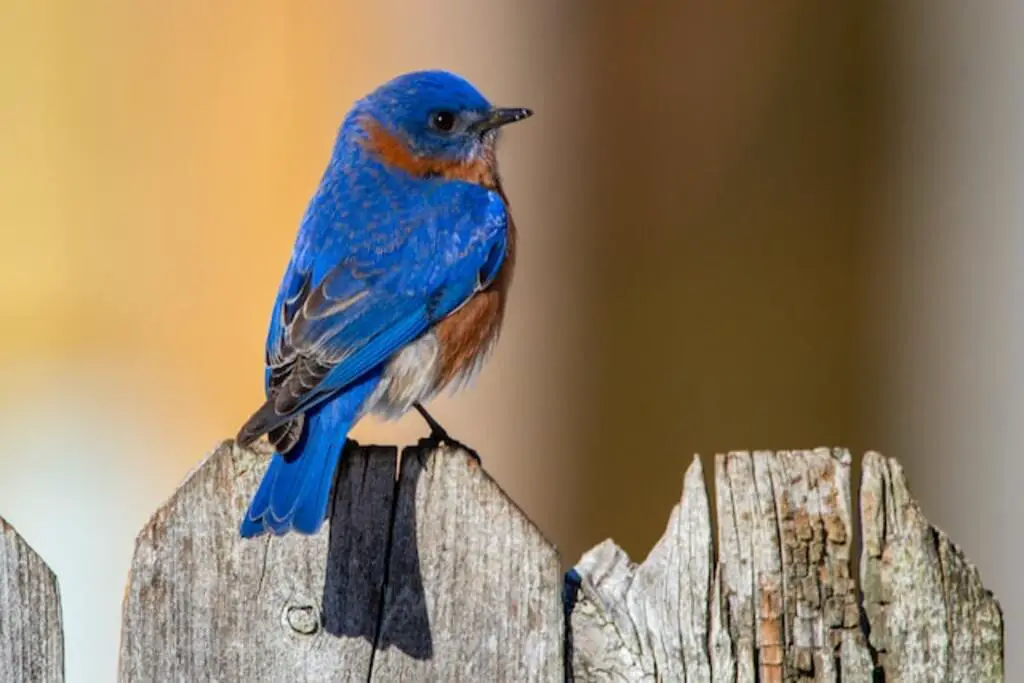
Frequently Asked Questions
How do I attract birds to my backyard for birdwatching?
Attracting birds to one’s backyard can be achieved by creating bird-friendly habitats. This includes providing food sources such as bird feeders and planting native vegetation that offers shelter and nesting sites. Additional features like birdbaths and birdhouses can also enhance the attractiveness of the environment.
What are some common mistakes beginners make while birdwatching?
Common mistakes beginners make while birdwatching include poor field observation, lack of knowledge about bird behavior, and reliance on visual cues alone. To improve bird identification skills, it is important to study bird field guides and learn about bird vocalizations.
Can I use binoculars for birdwatching or are there other specialized equipment I need?
Binoculars are essential for birdwatching as they allow for a closer and clearer view of birds in their natural habitat. Field guides are also important in identifying different species. Both tools enhance the overall birdwatching experience and assist in accurate bird identification.
Are there any apps or websites that can help me identify bird species?
Bird identification apps and popular birdwatching websites can aid in identifying bird species. These resources offer comprehensive databases, photos, audio recordings, and range maps to help birdwatchers accurately identify and learn about different species.
How long does it typically take to become proficient in bird identification?
Proficiency in bird identification requires a significant time commitment and involves a learning curve. The duration varies depending on individual aptitude and dedication, but typically takes months to years to develop a comprehensive understanding of bird species.
What equipment do I need for birdwatching as a beginner?
To start birdwatching, you’ll need a pair of binoculars, preferably with a magnification of 8x or 10x, and a field guide to help you identify different bird species. Comfortable clothing, a notepad, and a pen can also come in handy for taking notes.
Where is the best place to go birdwatching as a beginner?
Local parks, nature reserves, and wildlife sanctuaries are excellent places to begin birdwatching. Look for areas with diverse habitats, such as forests, wetlands, or coastal regions, as they attract a wide variety of bird species. Joining a birdwatching group or club can also provide valuable guidance and recommendations.
How can I identify birds while birdwatching?
Observing key features such as size, shape, color patterns, and behavior can help you identify birds. Pay attention to the bird’s beak shape, wing markings, and distinctive calls or songs. Consulting a field guide or using birding apps can assist in the identification process.
What time of day is best for birdwatching?
Early mornings and late afternoons are generally the best times for birdwatching, as birds are most active during these periods. Many birds are vocal and active during dawn and dusk, making it easier to spot and identify them.
How should I approach birds while birdwatching?
Approach birds slowly and quietly, avoiding sudden movements or loud noises that may scare them away. Use natural cover such as trees or bushes to camouflage yourself, and maintain a respectful distance to avoid disturbing their natural behavior.
What should I do if I can’t identify a bird I’ve seen?
If you encounter a bird that you can’t identify, take notes of its characteristics, such as size, color, and behavior. Try to capture a photo if possible. Later, consult a field guide or post the information and photo on online birdwatching communities for help with identification.
Are there any safety considerations while birdwatching?
When birdwatching, be mindful of your surroundings and avoid venturing into unsafe or unfamiliar areas alone. Take precautions for extreme weather conditions, use insect repellent to ward off bugs, and be aware of any potential hazards like uneven terrain or wildlife encounters.
How can I enhance my birdwatching experience?
Learn about bird behavior, migration patterns, and habitats to deepen your understanding of birds. Joining birdwatching groups or participating in guided tours can provide valuable knowledge and opportunities to observe birds in different locations. Keeping a birding journal can also help you track your observations and progress.
How can I contribute to bird conservation efforts as a beginner birdwatcher?
You can contribute to bird conservation by participating in citizen science projects like bird counts or surveys, reporting rare or endangered bird sightings, and supporting local conservation organizations. By learning about and sharing your passion for birds, you can raise awareness about their importance and the need for their protection.

